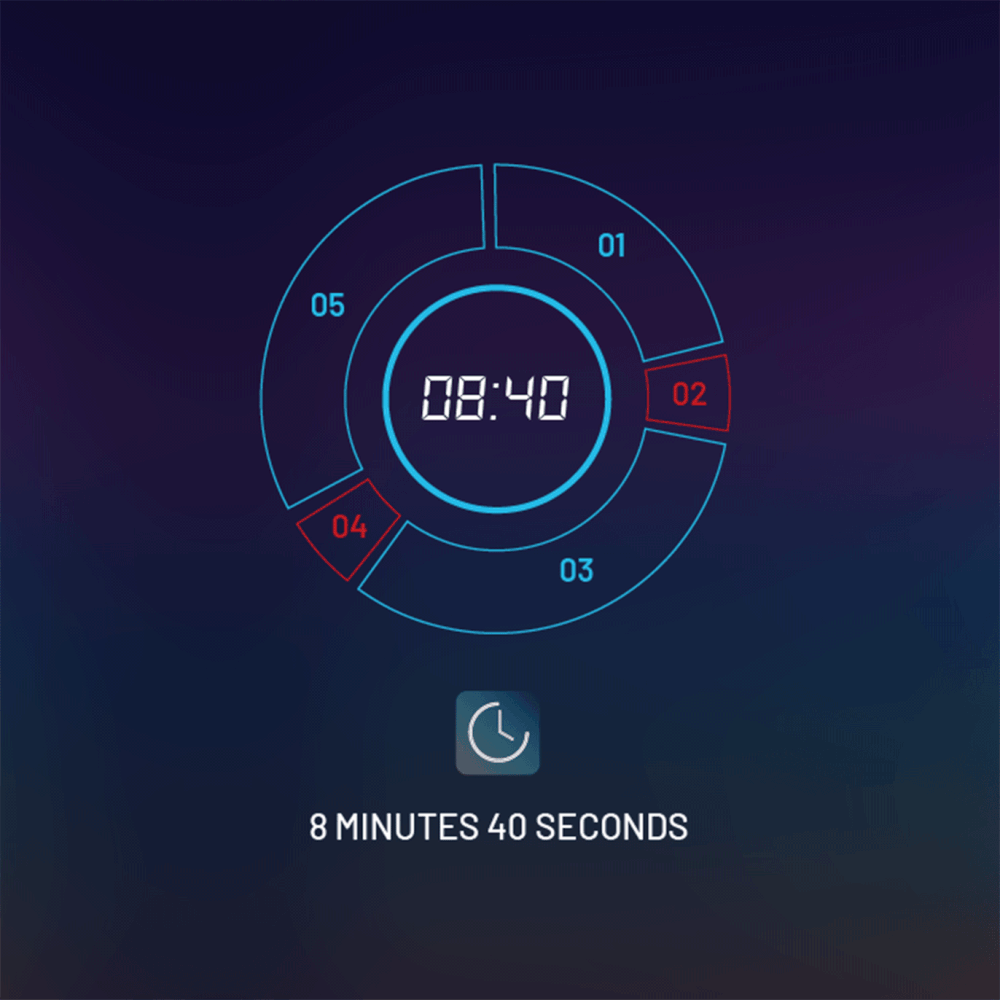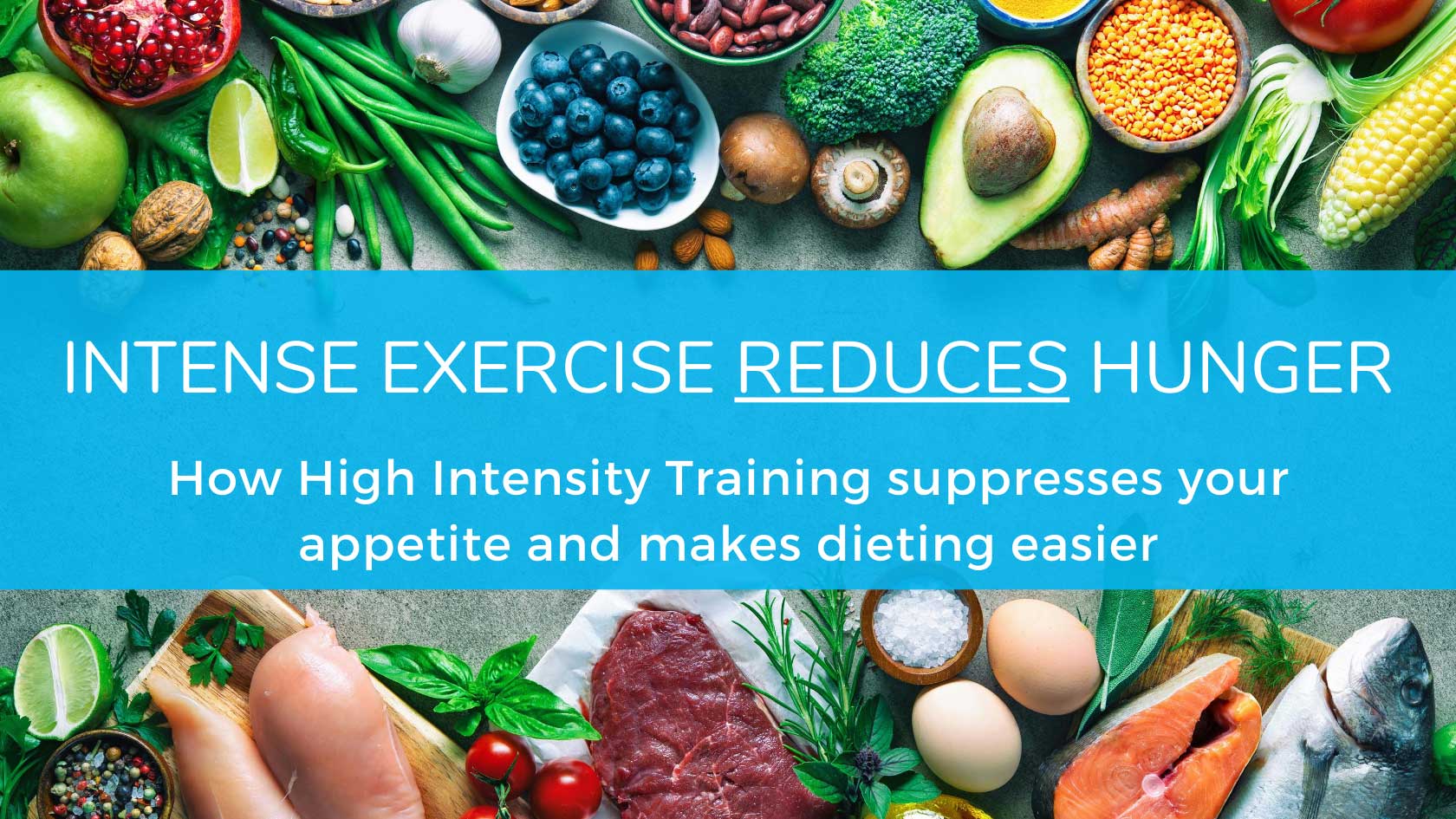“I lost 60 lbs following this diet a few years ago.”
“That’s great! Were you able to stick with that?”
.“No, I was starving all the time…”
Poorly controlled hunger makes dieting unsustainable.
Anyone can go hungry for a few weeks, cutting portions and relying on willpower in an attempt to lose a few pounds. But ultimately, hunger wins. If you are frequently hungry, your diet won’t last. Willpower is simply a finite resource, and any dietary strategy that relies on your ability to power through is ultimately going to fail. What we need is a way to lose fat, and keep it off, with less willpower. This is the core of our body recomposition approach at StrengthSpace: low-willpower lifestyle changes.
Excessive, moderate intensity exercise drives up hunger for many.
Now, in the previous article, we saw that prolonged exercise at moderately hard intensities can, for some people, cause increased hunger and weight gain. Ironically, workouts in the “fat burning zone” of moderate but sustainable intensity have a way of driving appetite levels up. Willpower becomes the last line of defense against overeating, and willpower only lasts so far. What if there was a way to workout that not only avoided appetite increase, but actually lowered appetite for hours and even days afterwards. This isn’t too good to be true – it’s clearly evidence based, and in this article I’m going to explain how it works, and how to do it.

Intense exertion involves different metabolic pathways than moderate exercise.
At rest, or during light aerobic activity, all of our muscle’s energy needs can be met by burning fats and glucose (carbs) in the mitochondria, the cell’s “powerhouse.” Mitochondria are very efficient at extracting energy from chemical bonds, but they aren’t always fast enough to meet all our needs. When there is an “emergency,” we need to be able to call on our emergency fuel source: glycogen.
Glycogen is the “emergency” fuel for very intense activity.
Glycogen is a chain of glucose molecules stored in each muscle cell. When you have to sprint as fast as possible, such as when fleeing from a bear, or when trying to catch a flight, your body begins breaking up glycogen to rapidly access this quick source of energy. After the body splits each 6 carbon glucose in half to get some of its energy, these 3 carbon halves begin to accumulate in the cell. The mitochondria isn’t quite fast enough to finish breaking them all the way down, and so they leave the cell as lactate. That’s right, lactate is simply excess energy, not some waste product. It travels through the bloodstream and is used elsewhere. The brain, heart, and muscles can use it for energy, and the liver can recycle it back into glucose.
Spiking lactate with intense exercise reduces hunger and food intake.
There is always some lactate moving into and out of muscle cells. But when we work really hard, we increase its levels in the blood. And, because lactate is energy, it helps suppress our appetite! When we exercise such as running we increase its levels in the blood..
But our bodies don’t just burn our emergency fuel (glycogen) and release lactate frivolously. In a sense, this is energy-wasting, and so our bodies only do it during very high intensity exertion that simulates a true emergency.

In fact, in one study where moderate intensity exercise was compared with both vigorous exercise and “all out” sprinting, those in the all out sprint group ate less over the next three days than both the moderate and vigorous exercisers! This is incredible for those of use looking to avoid the pitfalls of “working up an appetite.” We can workout intensely, and briefly, and actually suppress hunger, making it easier to resist cravings and stay on track.
Lactate levels increase more with shorter, harder workouts.
It seems clear that, if we want to get the appetite-suppressing benefits of exercise, intensity, not amount, is key. The more intense our level of effort, the more appetite suppression we get, as appetite driving hormones like ghrelin are more inhibited at greater intensities. Fortunately, there are several ways we can really maximize our intensity, safely, to get the biggest bang for our lactate-buck.

First, we can train with whole-body resistance training. Whole body workouts that challenge all the large muscle groups of the arms, torso, and legs produce greater levels of lactate and appetite suppression then split routines. We can also pick rep ranges that lead to deep fatigue. Weights that are too light don’t create enough of a demand on our larger muscle fibers, while weights that are too heavy result in sets that are very short. Instead, results are best when we train with maximal effort to fatigue using moderately heavy loads, which is precisely how we train at StrengthSpace!
Very intense exercise helps fat loss by lowering hunger, not burning calories.
Even though very intense bouts of exercise are by necessity quite short, they are very effective at supporting diet-driven weight loss because they suppress hunger. As we’ve said, the more intense our exercise, the better for these purpose. When moderate, high, and very high exercises intensities are compared, it is the very high intensities that show the greatest appetite suppression and resulting reduction in food intake.
Working out very hard, and very briefly, will help you eat less. It’s about what the workout does to your metabolism, not how many calories you burn.

Exercise can support weight loss in less than 1 hour a week!
This is great news, and I hope it empowers anyone who is frustrated by the lack of time in their day. It doesn’t take hours to spike your lactate levels with exercise. On the contrary, very short workouts can do a better job than an hour long jog. Just two intervals, during a 9 minute CAROL bike ride, are more than enough to completely drain muscle glycogen and drive serum lactate levels very high, killing your appetite and supporting your dietary goals.
High Intensity Intervals can take just 9 minutes.
At StrengthSpace, our clients do 2 strength workouts per week of 20-25 minutes in duration, and 2-3 CAROL rides per week at less than 9 minutes each. A very small time commitment for large benefits to strength, body composition, and metabolic function. In part 3, we’ll learn how focusing on burning glycogen specifically, and not calories in general, reverses metabolic dysfunction and makes body fat more available for use. Until then, make a plan to exercise briefly, safely, and with the highest intensity possible.


